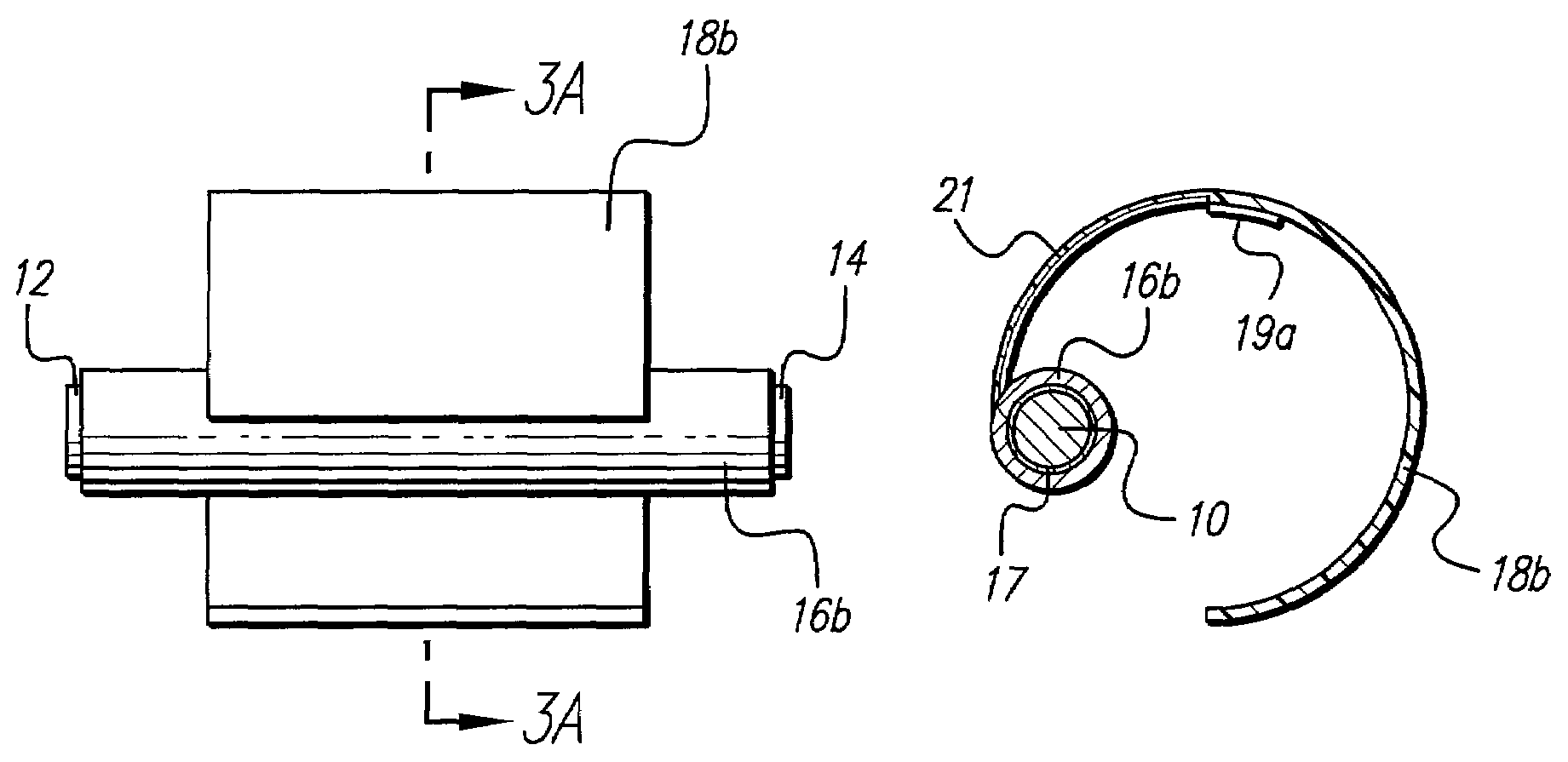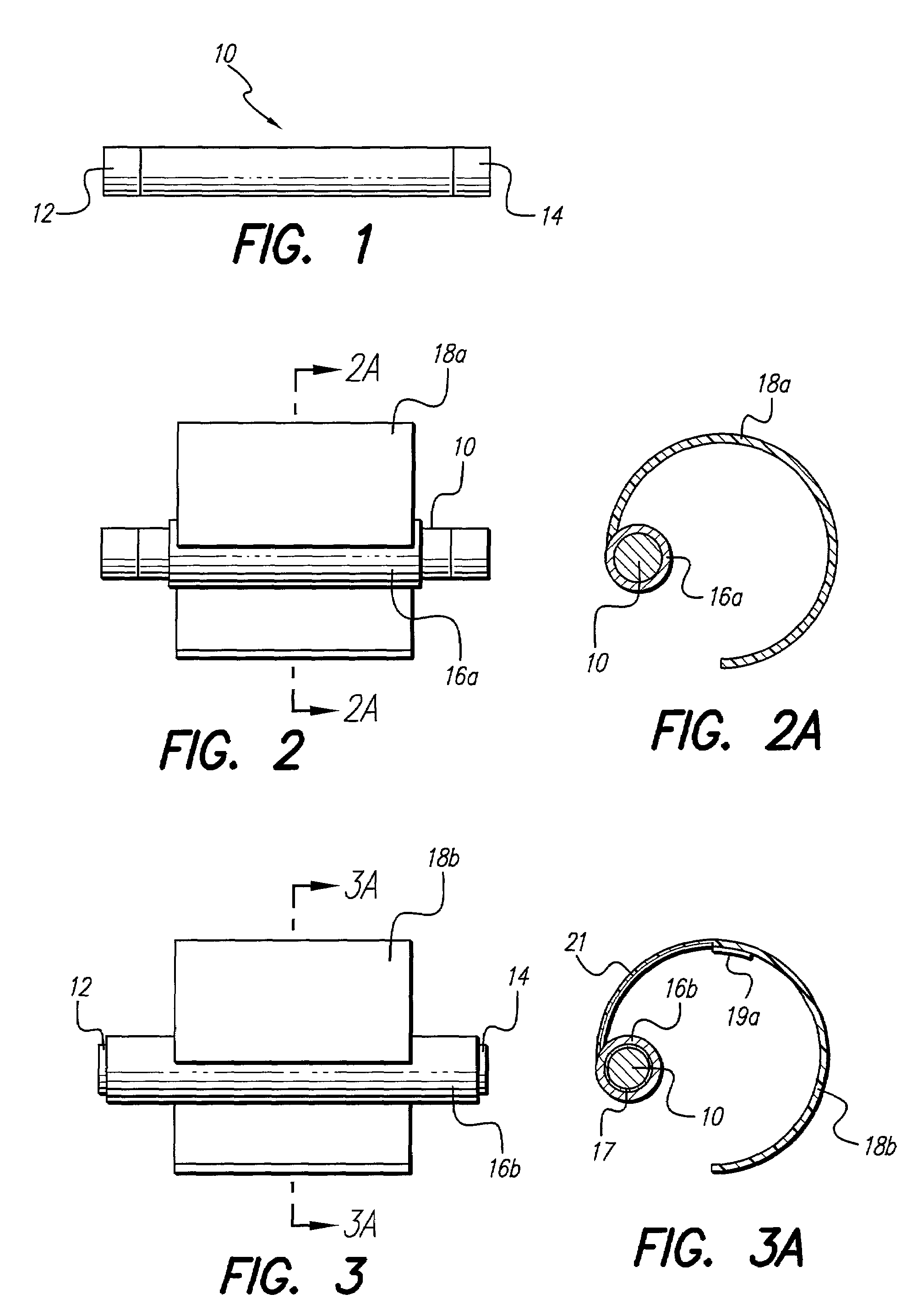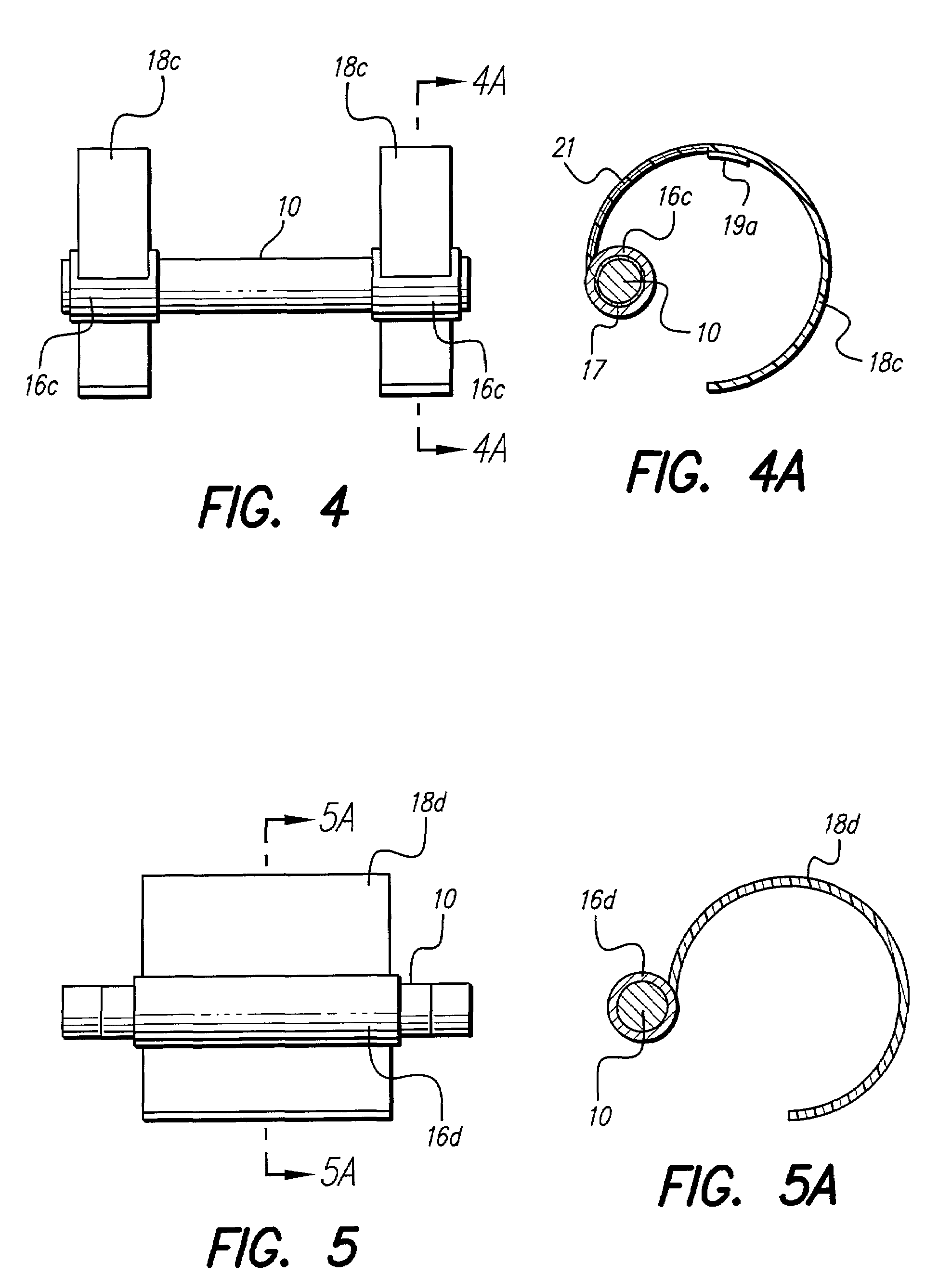Fixation device for implantable microdevices
a technology of fixation device and implantable micro-device, which is applied in the field of implantable electrical stimulation device, can solve the problems of micro-stimulators that may migrate over time and become ineffective, may be thin and rather long, and may be prone to mechanical damag
- Summary
- Abstract
- Description
- Claims
- Application Information
AI Technical Summary
Benefits of technology
Problems solved by technology
Method used
Image
Examples
first embodiment
[0043]In some applications, for example Peripheral Nerve Stimulation (PNS), the microdevice 10 may require a fixation device to prevent migration of the microdevice 10 after implantation. In general, the fixation device comprises a holder suitable for holding the microdevice 10, and a means for attaching the fixation device to body tissue. the fixation device is shown in a side view in FIG. 2, with the fixation device comprising a first sheath 16a which holds the microdevice 10, and a first grasping member 18a to attach the microdevice to a nerve, muscle, or other body tissue.
[0044]A cross-sectional view of the first embodiment of a fixation device, taken along line 2A—2A of FIG. 2, is shown in FIG. 2A. A somewhat flexible curved member forms the grasping member 18a, with the sheath 16a residing substantially inside the arc of the grasping member 18a (i.e., most or all of the sheath 16a resides inside the circle defined by that arc of the grasping member 18a). The grasping member 18...
second embodiment
[0045]a fixation device is shown in FIG. 3 in a side view, and in FIG. 3A in a cross-sectional view taken along line 3A—3A of FIG. 3. A second grasping member 18b includes at least one first electrode 19a, which electrode 19a is electrically connected by at least one lead 21 to at least one contact 17 residing on the interior of a second sheath 16b. The contact 17 is adapted to cooperate with the microdevice 10 to provide an electrical connection between the lead 21 and electronics included in the microdevice 10, preferably through contact with the anode 12 or the cathode 14. However, those skilled in the art will recognize that the contact 17 may electrically connect to the microdevice 10 through some other special contact on the exterior of the microdevice 10. In a preferred embodiment, the contact 17 comprises a cylindrical or ring contact.
[0046]In the second embodiment, the anode 12 and the cathode 14 may be exposed to tissue, or may be covered and insulated, in whole or in part...
fourth embodiment
[0048]the fixation device is shown in a side view in FIG. 5 and in a cross-sectional view in FIG. 5A taken along line 5A—5A of FIG. 5, wherein a fourth sheath 16d resides substantially outside the arc of a fourth grasping member 18d (i.e., most or all of the sheath 16d resides outside the circle defined by that arc of the grasping member 18d). Electrodes may be included in the grasping member 18d as described for FIGS. 3 and 3A above, or the simulation or sensing may be provided solely by the anode 12 and the cathode 14. Further, the sheath 16d and grasping member 18d may be configured as two or more sheaths and grasping members as described in FIGS. 4 and 4A.
[0049]A fifth embodiment of the fixation device is shown in FIG. 6. The fifth embodiment includes at least one helix member, and preferably first and second helix members 20a and 20b, which wrap around the tissue 23, and may or may not include at least one fifth grasping member 18e. The helix members 20a and 20b, and the graspi...
PUM
 Login to View More
Login to View More Abstract
Description
Claims
Application Information
 Login to View More
Login to View More - R&D
- Intellectual Property
- Life Sciences
- Materials
- Tech Scout
- Unparalleled Data Quality
- Higher Quality Content
- 60% Fewer Hallucinations
Browse by: Latest US Patents, China's latest patents, Technical Efficacy Thesaurus, Application Domain, Technology Topic, Popular Technical Reports.
© 2025 PatSnap. All rights reserved.Legal|Privacy policy|Modern Slavery Act Transparency Statement|Sitemap|About US| Contact US: help@patsnap.com



